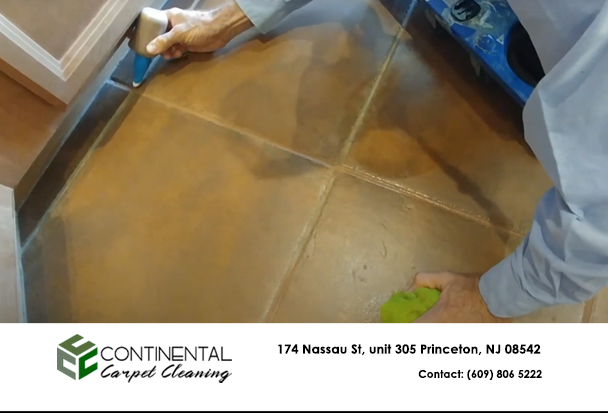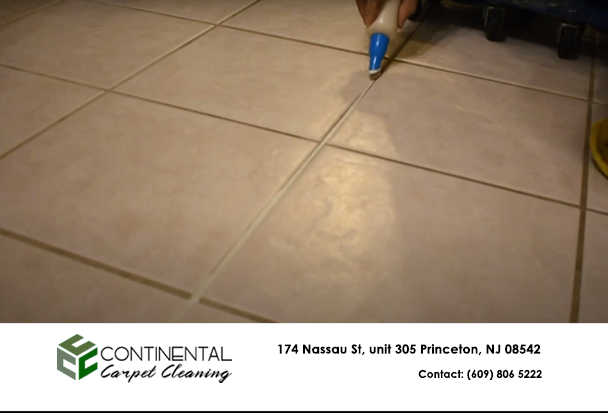Fill up the form to request for a quote or schedule for a free appointment. We’ll get back to you as soon as possible.
Sealing your grout will protect it from those contaminates and keep it from getting dirty and stained over time.
You should seal your grout 72 hours after it has been installed and you should also re-seal your grout at least once per year especially in showers and high traffic areas like tile floors.
The brush tipped applicator is suitable for sealing little grout joints and for sealing vertical grout joints located in showers and backsplashes.
The roller wheel type applicator works best for sealing wider grout lines on horizontal surfaces like tile floors.

You must always reseal your grout it has been deep cleaned. Deep cleaning grout with strong alkaline and acidic cleansers can break down the sealers in grout.
Grout sealers will also break down over time, so you should seal your grout at least every 3-5 years. You should always thoroughly clean your grout before sealing it.
You do not want to seal in any dirt and contaminates causing permanent hard to remove stains in the grout.
The wet grout in showers is a perfect spot for dangerous toxic mold to breed and live.
Sealing the grout will help prevent water from being absorbed by the grout. Wet shower grout is a perfect place for mold to bread and live so sealing the grout is the best way to keep mold and mildew from growing in the grout.

Don’t worry if some of the sealer gets on the surface of the tiles. The excess sealer on the tile’s surface will be wiped away later.
Work only in small sections at a time and keep the grout joints saturated with grout sealer for 5-10 minutes.
If you understand that the sealer is getting absorbed by the grout and starting to dry then apply more sealer to the grout to keep it thoroughly saturated with the grout sealer.
When an area of sealer starts to dry on the tile surface, then add more sealer to keep that region saturated with the grout sealer.
Trying to keep these vertical grout joints saturated with sealer for 5-10 minutes can be a challenge that’s not always achievable.
Try to get as much bleach to the vertical grout joints as possible without letting the sealer to dry on the surface of the tiles.
Gently applying sealant to the vertical grout lines while continually wiping the excess sealer off the tile surfaces is the best way of sealing grout on vertical tile surfaces.
It’s important that the sealer doesn’t dry on the tile surface as you’re sealing the grout. If it is a hot summer day, try to seal the grout in the morning or evening when it is the coolest.
You also do not want to seal grout in freezing cold temperatures. You should read the grout sealer manufactures instructions for the proper conditions and temperatures recommended for utilizing their grout sealer.
Low grade sealers from local home improvement stores will not offer much protection for your grout and they will allow your grout to readily become stained.
Also these low grade sealers will not last long and they will break down readily with normal everyday cleaning solutions. Stonetech Bulletproof performed as one of the best sealers for protecting grout in our grout sealer review. The 1 quart container of grout sealer will seal approximately 200 sq/ft of grout with 12 inch tiles and 1/8 inch grout lines.
It is significantly easier to keep the grout saturated with sealer on the horizontal tile surfaces like tile countertops and tile floors.
These horizontal surfaces may also get dirty more quickly so it is more important to thoroughly seal these surfaces to protect the grout from getting dirty and stained.
The simplest way to wipe off the excess grout sealer is to just use ordinary paper towels.
Roll up about 10 sheets of paper towels and use them to wipe down the tile and grout surfaces.
When your sheets of paper towels become saturated with sealer then simply throw them away and find a fresh wad of paper towels and continue cleaning up the excess grout sealer.
Continue wiping the tile until all traces of this grout sealer are gone and there’s absolutely no grout sealer haze left on the tile surfaces.
It’s important to not leave any traces of sealer residue on the tile surfaces. Examine the tiles from different angles to ensure that there isn’t any sealer residue or sealer haze left on the tile surfaces.
If you find a grout sealer haze on the tiles then you can apply some more sealer to the regions of sealer haze.
This will reactivate the grout sealer so the grout sealer haze can be removed. After the grout sealer haze has been reactivated it is possible to wipe up the grout sealer haze with paper towels.

Also try to reduce spilling any liquids or getting any dirt or contaminates on the grout lines to get a full 24 hours after sealing them.
You ought to see the grout lines to lighten up and go back to their original color as the grout sealer dries in the grout lines.
Commonly, grout contains cement mixed with water, sand, and polymer additives which cures into a hardy, ceramic-like substance.
Grout is often quite porous, however, and vulnerable to liquids and dirt seeping into it. This can’t just stain and discolor the grout but also damage it and foster the growth of mold.
Why should you seal your grout? Cement grout is porous and will absorb any liquid that gets on it which could include soap scum, oils, juices, or just dirty water.
Then it will stain, grow mold, and even start to stink. Nobody likes smelly grout. By sealing the grout you fill the pores of the grout so that other stuff can’t get in and stain it. Basically, sealing your grout keeps it looking new for longer.
However, not all grout needs to be sealed. If you have epoxy grout, you should not seal it because it won’t accept a sealer anyway. How can you tell if you have epoxy grout? Easy, does it look and/or feel like plastic? If so, then it is epoxy grout.
Next, I talk about how which sealers are best to use and why. Basically, any high quality penetrating sealer with flourochemicals is best. That way there are different sized particles that can fill in the gaps on the grout.
Finally, I’ll share three ways to apply the grout sealer to the grout. I mention a method to apply sealer to floor tile grout, shower tile, and even natural stone tile. Just make sure to clean your grout well before sealing, otherwise you will seal in stains!
How much grout sealer do you need? Not much, I would recommend buying the smallest amount you can unless you are planning to seal a large amount of floor tile. You can usually seal an entire shower at least 3 times with just one pint of sealer.
And finally, I give you some tips for sealing your grout like how to remove grout sealer that has dried.
Sometimes, grout is too far gone. Mold, bacteria, and mildew that are entrenched in grout long enough can be extremely difficult to remove with cleaning, and if the grout is already damaged, then cleaning is of little assistance.
While regular sealing may prevent grout from reaching this point, grout removal and re-application may also help renew tiling which has seen better days.
New Jersey’s Leading & Trusted Professional Carpet Cleaning Service. We provide professional carpet cleaning, tile and grout cleaning, air duct cleaning, area rug cleaning and water damage restoration for your home and office.
Copyright © 2021. Continental Carpet Cleaning. All Rights Reserved.